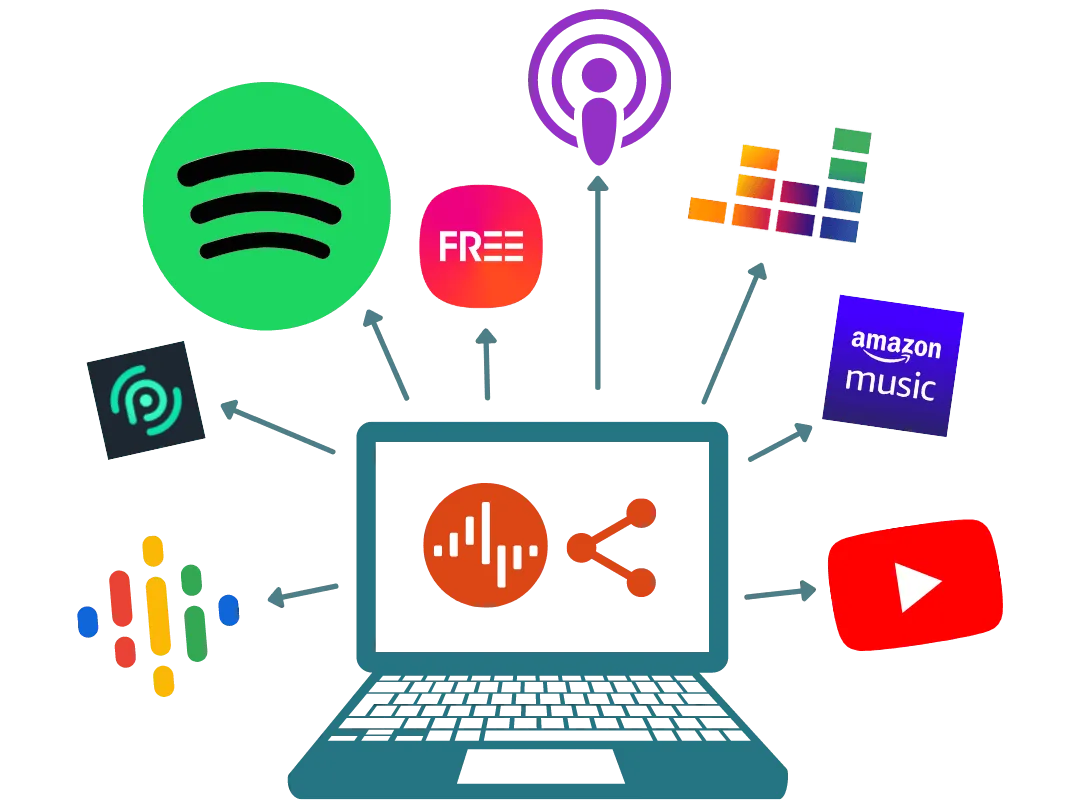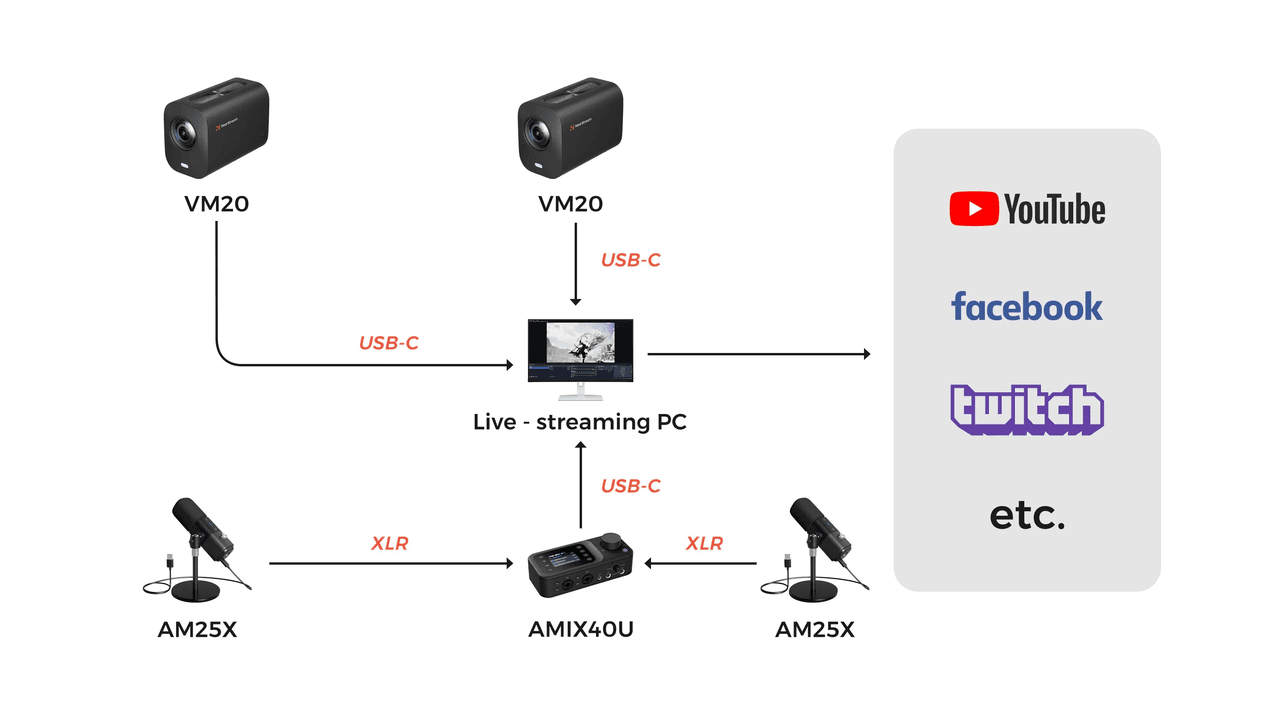Imagine sharing your voice, stories, and expertise with a global audience—without spending a dime. According to Statista, there are approximately 504.9 million podcast listeners worldwide in 2024 (23.5 % of all internet users), with U.S. monthly podcast reach projected to exceed 113.6 million users. Podcasting is also forecast to grow by nearly 48 % between 2024 and 2029, making now the perfect time to learn how to start a podcast for free. Whether you’re a passionate hobbyist or a budding entrepreneur, this guide will show you how to create a podcast step by step, from choosing free podcast hosting to recording with zero‑cost software. You’ll discover the secrets behind some of the free popular podcasts topping the charts, gain insider tips on how to make a podcast for free, and unlock the tools you need to launch your show on your own terms. Ready to dive in? Let’s explore how to start your very first episode and build a community around your unique voice—completely without any cost.
Starting a Podcast for Free and Its Benefits
Podcasts offer a unique medium to engage audiences through in-depth conversations, storytelling, education, and entertainment. Unlike traditional broadcasting, podcasts allow creators to publish episodes on their own schedule and retain complete creative control. Listeners appreciate the flexibility of on-demand audio, making podcasts a powerful channel for building communities around niche topics. For businesses and individuals alike, starting a podcast can:
Establish authority in your field by showcasing expertise.
Reach global audiences at minimal cost.
Foster deeper connections through voice-driven storytelling.
Generate new revenue streams over time, such as sponsorships or listener donations.
Investing in podcasting is more affordable than ever, thanks to free podcast hosting and recording software options that eliminate the need for costly studio time or expensive distribution fees.

Step-by-Step Guide: How to Start a Podcast for Free
Step 1: Define Your Concept and Audience
Before you create a podcast, clarify your niche and target audience. Ask yourself:
What unique perspective or knowledge can I share?
Who will benefit most from my content?
How often can I realistically publish?
Naming your podcast is also crucial—choose a title that reflects your theme and is easy to remember. Securing matching social media handles early helps with branding and SEO.
Step 2: Choose Free Podcast Hosting
Selecting the right free podcast hosting provider is essential for distributing your show without upfront costs. Here are some top free options:
Spotify for Podcasters (Anchor): Offers unlimited hosting, automated distribution to major platforms, detailed listener analytics, and free transcription tools
Buzzsprout: Free plan allows up to 2 hours of uploads per month; episodes remain available for three months before expiring.
Podbean: Provides unlimited free hosting, live streaming, and built‑in recording via its app.
Spreaker: Free tier supports one show with up to six months of basic stats; upgrades unlock advanced analytics and private podcasts.
Acast & Podomatic: Additional platforms offering basic free tiers to get your podcast online immediately.
These options eliminate monthly fees, making them perfect for beginners learning how to start a podcast free.

Step 3: Gather Free Recording and Editing Tools
High-quality audio is critical for listener retention, but you don’t need expensive gear or software. Consider these free podcasting tools:
Audacity: The world’s most popular open‑source audio editor and recorder, available on Windows, Mac, and Linux.
GarageBand (Mac only): Intuitive recording software that supports multi-track editing and basic mixing.
Riverside.fm: Browser-based HD recording with separate tracks for each participant; offers a free tier with no credit card required.
Podcastle: An all-in-one browser tool for recording, editing, and AI‑powered enhancements; free plan available.
Descript (free version): Allows text-based editing and automatic transcription for simple cuts (limited minutes per month) .
Using these tools, you can make a podcast with professional-sounding audio.
Step 4: Record and Edit Your First Episode
With your hosting and recording setup ready, follow these steps to create a podcast for free:
Script or outline your episode to stay on topic.
Set up your recording environment in a quiet space; use pop filters and headphones to monitor sound.
Record your audio with Audacity, Riverside, or GarageBand.
Edit: Remove ums, pauses, and background noise. Audacity’s noise reduction and equalization tools are industry‑standard.
Export your final file as MP3 (128 kbps) for best compatibility.
Step 5: Publish Your Podcast for Free
Once your episode is ready, upload it to your chosen free podcast hosting provider. Most platforms automatically generate an RSS feed, which you can then:
Submit to Apple Podcasts, Spotify, and Google Podcasts directly from your host’s dashboard.
Embed episodes on your website or blog to improve SEO and provide show notes for each episode.
Share the RSS feed on social media and email newsletters to attract subscribers.
By following these steps, you’ll have successfully launched your podcast at zero cost.
How to Promote Your Podcast Without Spending Money
Effective promotion can drive downloads and listener engagement even when you have a limited budget:
Leverage social media: Create audiograms using free tools (e.g., Anchor’s clip builder) to share highlights on Instagram, Twitter, and TikTok.
Cross-promotion: Appear on other podcasts in your niche to tap into established audiences.
SEO‑optimized show notes: Include episode transcripts and relevant keywords in your blog posts to rank for terms like how to start a podcast free. You can get more information from our blog: How to Boost Your Podcast’s Discoverability in Search Engines.
Community engagement: Participate in Reddit’s r/podcasting or Facebook groups to share insights and invite feedback.
Email newsletters: Build an email list and send episode announcements with direct listening links to boost initial downloads.
Consistent promotion ensures your podcast gains traction without paid advertising.
Top Free Popular Podcasts to Inspire You
Looking for examples of free popular podcasts? These shows dominate the charts and all use free podcast hosting, succeeding by leveraging unique formats, consistent releases, and strong audience connection.
The Joe Rogan Experience Dominating as the world’s #1 podcast, Joe Rogan’s success stems from being an early adopter who’s released 3–5 episodes per week for over a decade, combining his natural‑born entertainer style (comedic timing, provocative humor) with long‑form, unscripted interviews that resonate with millions of listeners eager for deep dives on culture, science, and current events.
Crime Junkie
With over 1.5 billion downloads and Apple Podcasts’ #1 slot for two consecutive years, Ashley Flowers keeps fans hooked by dropping a new, tightly‑narrated true‑crime story every Monday, creating a friendly “listen‑along” vibe as if you’re hearing cases over coffee with two friends—plus data‑driven topic selection ensures each episode meets listener demand.
The Daily The New York Times’ flagship podcast attracts 4 million daily listeners through its concise, 20‑minute episodes published each weekday, marrying authoritative journalism with a storytelling format that drives brand affinity, subscription growth, and deeper engagement—especially among younger audiences seeking reliable news summaries.
Call Her Daddy Alex Cooper transformed her show into one of Spotify’s most‑streamed podcasts by crafting an edgy, unapologetic brand identity, delivering candid conversations on relationships and pop culture, and securing a $60 million exclusive Spotify deal—all while personally handling research, production, and audience interactions to maintain authentic engagement.
The Mel Robbins Podcast Topping Spotify’s charts with research‑backed, actionable self‑help advice, Mel Robbins releases regular motivational episodes that empower listeners to tackle real‑world challenges; her reputation as the world’s most booked female speaker and on‑air commentator ensures credibility and keeps audiences coming back for practical insights.
Best Budget Podcast Gear in 2025
Kickstarting a podcast doesn’t have to break the bank—2025 brings an array of affordable, high‑quality gear that fits budding creators’ budgets without sacrificing performance. Below are our top picks for budget‑friendly microphones, audio interfaces, headphones, and essential accessories, each offering professional‑grade features at entry‑level prices.
Best Budget Microphones
Rode PodMic (≈ $99): The PodMic is an XLR dynamic microphone designed for spoken‑word applications, delivering a neutral, uncoloured sound signature and integrating a built‑in pop filter to reduce plosives—an excellent value for multi‑host setups on a budget.
Blue Yeti (≈ $100): As a USB condenser microphone, the Blue Yeti provides plug‑and‑play simplicity, multiple polar patterns, and solid audio quality without the need for an external interface—featured as the core of Descript’s $150 Budget Podcast Starter Kit.
NearStream AM25X USB&XLR Studio Microphone (≈ $70): The NearStream AM25X delivers professional‑grade versatility—featuring dual USB/XLR connectivity, real‑time monitoring, intuitive smart‑knob controls, and a sturdy desk stand—in an affordable, plug‑and‑play package ideal for podcasters and streamers.
Best Budget Audio Interfaces
Audient iD4 MkII (≈ $200): Featuring class‑leading preamps, a robust metal chassis, and a dedicated monitor mix control, the iD4 MkII provides “bang‑for‑buck” performance ideal for beginners stepping up from USB‑only mics.
Focusrite Scarlett Solo (3rd Gen) (≈ $120): Renowned for its high‑quality preamps, low noise floor, and bundled software suite, the Solo remains a go‑to entry‑level interface for solo podcasters and voice‑over artists.
NearStream AMIX40U (≈ $130): With flexible connectivity options, versatile sound customization, premium preamps and real-time monitoring, this all-in-one portable audio interface aims to provide pro-grade audio and user-friendly setup for podcasters, producers, guitarists, and content creators.
These budget‑minded selections empower you to produce clear, professional‑sounding podcasts without high upfront costs — perfect for creators launching their first show in 2025.
Start Your Podcast Here
NearStream Provides a Budget Podcast Kit that Worths Every Penny. The NearStream PodPro Solo Video Setup delivers unbeatable value for free podcasters looking to elevate their audio‑visual production and fast‑track audience growth and monetization.
VM20 4K Camera: delivers crisp visuals with 40X zoom.
AM25X Condenser Mic: provides clear, noise-cancelled audio.
ST20 Boom Arm: offers flexible positioning.
AMIX40U Audio Mixer: gives you full control with 10 channels and Bluetooth.
XLR Cables: ensure seamless audio connectivity
Camera Stand: realizes ultimate stability and perfect angles.

Conclusion
Launching a successful podcast doesn’t demand expensive gear or costly subscriptions. By following this comprehensive roadmap, you’ve learned leverage podcast hosting, and use open‑source recording tools to create a podcast for free. From crafting engaging content to discovering popular podcasts for inspiration, you now have everything you need to hit “Record” with confidence. Go ahead—embrace your creativity, share your stories, and join the thriving world of podcasting without spending a penny. Your audience is waiting!









































































